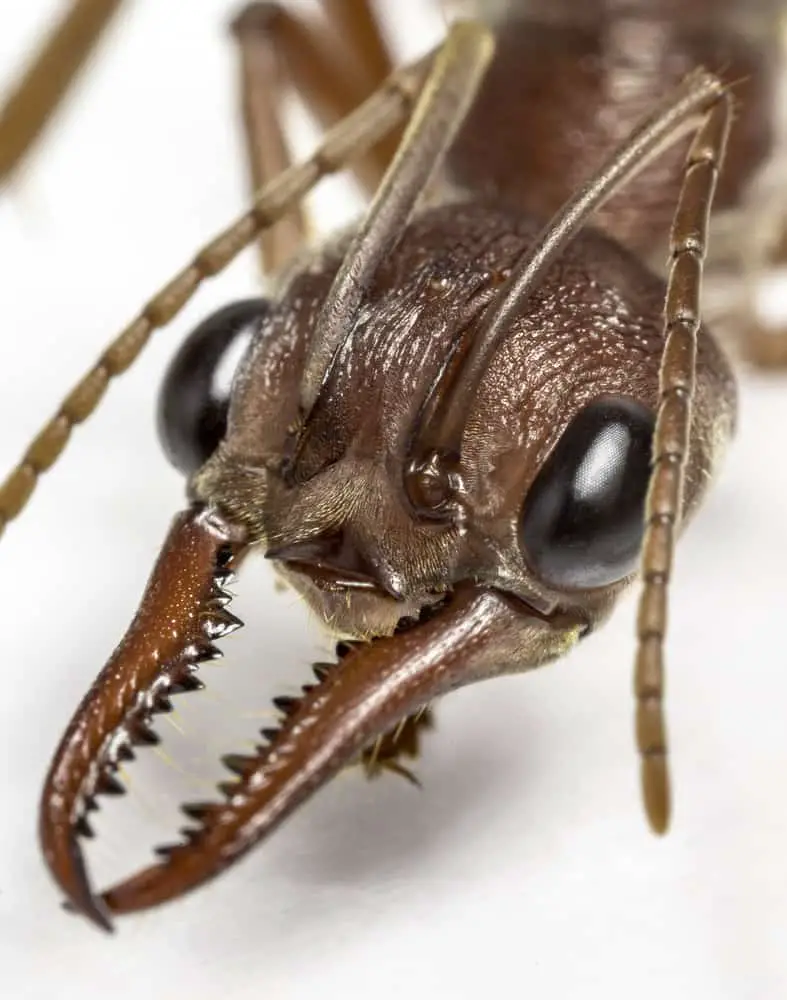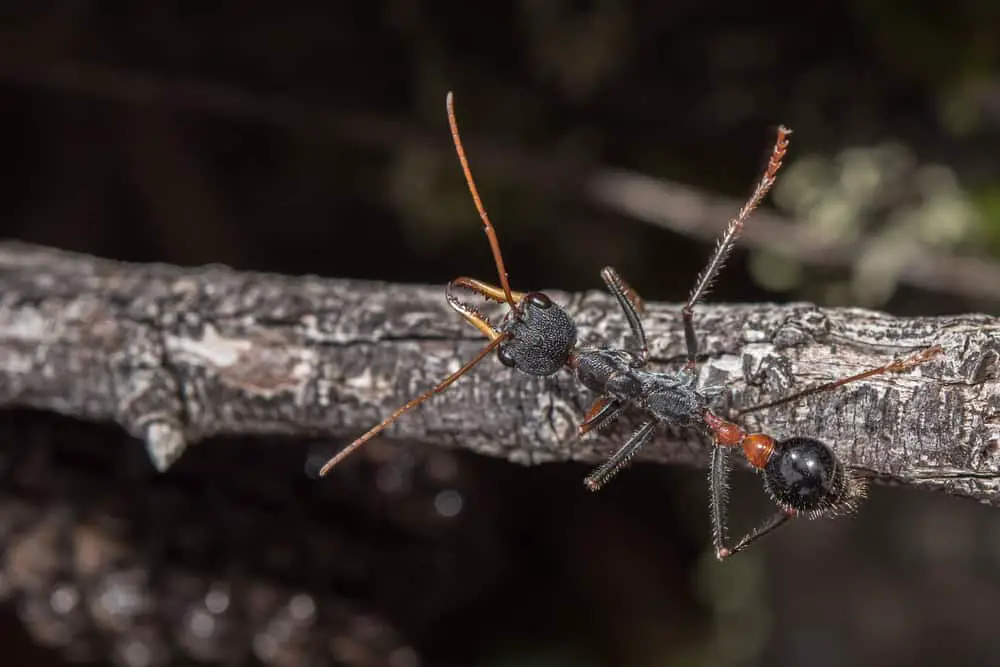Most ants we encounter are small and relatively harmless. They build long trails and make assembly lines, peacefully bringing food back to the nest. But Australian bull ants are another story. They are big and have a powerful sting that delivers strong venom, making them an ant you do not want to encounter.
If you see an Aussie bull ant out and about, give it plenty of room. It is unlikely it will attack you unless you provoke the nest or disturb the colony. If you happen to have an Australian bull ant nest on your property, however, steps need to be taken to eradicate this pest.
How to Kill Bull Ants?
The best way to kill Australian bull ants is to use a combination of liquid pesticides and nest bait. Because bull ants can be dangerous and several stings can force anaphylactic shock, extreme care should be taken when removing an ants nest.
When you locate an Australian bull ant nest, look for the ants’ trail. Place a shallow dish next to the trail that contains borax and sugar. The sugar will attract the ants, and the borax will be taken back to the queen, where it will collapse the entire colony.
Once all the ants are dead and you haven’t seen any movement for days, remove or cover the nest to avoid attracting other pests that want to eat the corpses. Be careful not to get stung while removing the nest if a straggler or two has survived.
Types of Bull Ants
The term bull ant can actually be talking about two different genera. There is the Australian bull ant, which this article is about, and the carpenter ant in Florida with the nickname bull ant. There are also different species of bull ant like the jumping bull ant and the red bull ant.
| Type of Ant | Where It Can Be Found | Attributes |
| Red Bull Ant | Eastern Australia | Biggest bull ant, Venomous stingers |
| Jack Jumper Ant | Southern Australia | Can Jump, Venomous stingers |
| Carpenter Ant | Florida | Large ants, Non-venomous bite, no stinger |
- Red Bull Ants – These are some of the biggest and strongest types of ant and have wicked venom in their stingers. They hunt other insects for food for the colony and are capable of taking down bees and other ants. They can’t use pheromones like other ants but have excellent vision with which to hunt prey and defend their nests.
- Jack Jumper Ants – A venomous ant found in southern Australia, it is smaller than other bull ants but has the ability to hop and leap when scared or hunting. Their venom is so strong, and they are so prevalent that 3% of humans have developed an allergy that could lead to anaphylactic shock when stung.
- Carpenter Ants – Big ants that like to forage at night; these bull ants live in Florida. The size of the ants is similar to the larger genus in Australia and is one reason they share a name. They eat honey and will not bite and do not have a painful sting like the venomous bull ants.
Where Can Bull Ants Be Found?
Knowing where bull ants live can help you avoid them and stay sting-free. If you live in or are visiting Australia, it is wise to read up on these ants and where they are located to avoid a nasty surprise.
Luckily, bull ants are unlikely to nest inside buildings or structures. They prefer to build extensive underground tunnels and complex colonies. Although the tunnels are vast, the colony size is usually in the hundreds to thousands. Other types of ant colonies range into the millions.
A single nest can be several yards wide and encompass much of the subsoil in that area. Bull ants are often found in bushes and trees as well as underground. Different species build nests and clump debris together in woody areas. These types of bull ants are especially dangerous because you can stumble upon a nest unaware and get stung badly.
Can Bull Ants Sting?
Bull ants have extremely venomous stingers and can cause pain and redness. It is common for pets like dogs to get bites when running along trails in Australia. The stingers of bull ants are long and can inject a tremendous amount of venom into our system.
Unlike bees, the sting of a bull ant is not lost when it stings. A bull ant can sting repeatedly but only has a limited amount of venom in its glands to insect each sting. Removing the ant is the best way to stop it from continuing to sting. Often several ants will sting at once, causing tremendous pain.
Dangers of Bull Ant Stings

The sting of a bull ant represents one of the most harm an ant can do to a human. Bull ants inject venom into their victims when they sting, and this causes pain and redness. The instant effects of the sting are pain and eventual swelling and prolonged irritation. Because of its potency, bull ant bites can be very dangerous.
Humans have been killed by bull ant stings due to allergic reactions. Because these are prehistoric ants (wingless wasps) the human population has accumulated high levels of this venom in our systems over our existence. Repeated bites or too many simultaneous bites can and have induced anaphylactic shock. This is a life-threatening condition that requires immediate medical attention.
Drastic Steps to Kill Tough Bull Ants Colonies
Bull ants are strong, large, and well adapted to surviving in the bush. While there is enough room for all creatures on this planet, sometimes there are bull ant colonies too close for comfort. The potential life-threatening effects of the sting make it too dangerous to allow them to co-habitat in your space.
In most cases, you can use bait traps and liquid pesticides to weaken the colony and destroy the nest gradually. If you have weeks to spend letting the traps work, then this is the best solution, as it keeps you away from the nest.
If you need to immediately kill bull ants for your safety, then you may need to take more drastic measures. Boiling water or vinegar poured directly down the ant hole is a quick way to kill every ant it can reach during any life cycle. Doing this everywhere tunnels open up should end the colony quickly.
Be cautious when approaching a bull ant nest as they are highly territorial and very aggressive. Approach at dusk to pour the boiling liquid into the tunnels to increase the likelihood of catching them resting. You can also spray the tunnel with a hose to trick them into thinking it is raining before pouring liquid death into their nest so fewer sentinels will be around to spot you.


